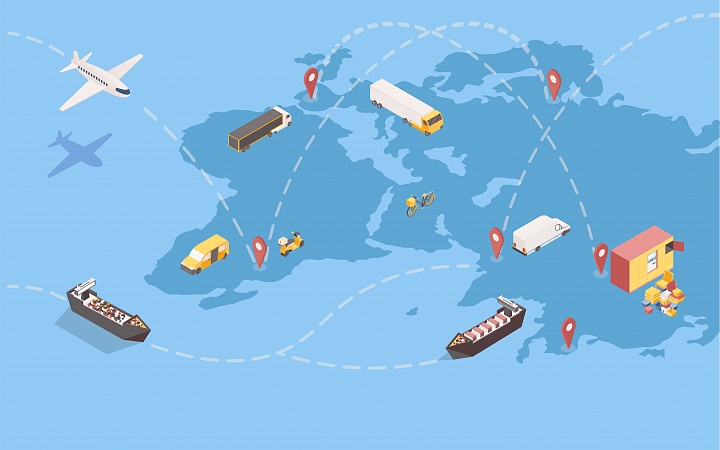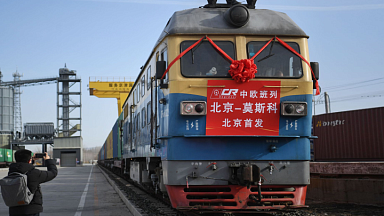Asia-Europe ocean freight shippers face an «extremely serious» space crunch and further rises in prices, with the shortages of capacity and available containers continuing to intensify across all major Far East export ports.
In its latest weekly Ocean Freight Market Update on the Asia-Europe (Far East Westbound — FEWB) trade, US freight forwarder Flexport highlights an «extremely serious space crunch and equipment shortage across the entire FEWB trade, caused by high demand, too many blank sailings (leading to) reduced capacity, and insufficient equipment repositioning following schedule delays».
Backlog building
It said ocean freight carriers «are building up backlog, restricting new booking acceptances, and rolling more cargo — trends expected to intensify through May and June». It noted that rates had increased further following general rate increases (GRIs) by all carriers implemented from 15 May, recommending advance booking notice of three or more weeks prior to the cargo ready date (CRD).
And the picture is similar on the Asia-North America (Transpacific Eastbound — TPEB) lane, where Flexport describes the market as «red hot», noting: «The market keeps intensifying as the capacity crunch continues across all TPEB lanes. Southeast Asia and North China remain riddled with equipment shortages and mounting backlogs of bookings left without equipment.»
It added that bookings «out of China Base ports have surged in the last week as more shippers choose to move volume to where there’s equipment. As demand continues to far outpace supply, there’s no slowdown in sight.»
It reported that a GRI for the second half of May had been implemented, with space «extremely tight» and «extreme shortages» of capacity and equipment.
Cyclone adds to India pressures
For the India to North America market, Flexport noted that carriers had implemented a GRIs from 15 May, with blank sailings due to schedule reliability or congestion continuing to affect capacity out of the Indian subcontinent (ISC) region.
It also highlighted that the recent Cyclone Tauktae will impact container operations in Western India at ports such as Nhava Sheva and Mundra, with delays expected and carriers potentially using blank sailings or port omissions to mitigate these delays.
It said demand «is outweighing capacity, similarly to tradelanes like TPEB, which ISC relies on for shipments to the USWC», with suggested booking remaining at 15-20+ days prior to Cargo Ready Date (CRD).
Extraordinary price levels
Freight fowarders in Europe have reported that the ocean freight market has worsened markedly in recent weeks, as the aftermath of the Suez Canal blockage has continued to have an impact on port congestion, capacity, container availability, and pricing — driving up rates on the Asia-Europe trade lane to unsustainable levels and threatening the very survival of many shippers and importers.
Lloyd’s Loading List last week reported that some shippers have been paying as much as $18,000 per feu for urgent shipments from Asia to Northern Europe. With most vessels ex-China fully booked or over booked, and up to 40% of containers getting rolled, cargo owners with urgent cargo are having to pay huge premiums for guaranteed space resources
Peter Wilson, group managing director of logistics and maritime service provider Cory Brothers, told Lloyd’s Loading List that whereas 12-15 months ago, the going rate on the Asia-Europe route was $2,000 per feu, China-UK shippers were currently having to pay $12,000 to get a 40-foot box away while accepting the risk that it could be sat on the quayside and rolled because someone’s offered $14,000-15,000.
No guarantee at $12,000/feu
«Now we’re at $8,000+ before surcharges — so that’s at least $12,000 all-in, and you still don’t have the guarantee that it will move at that price,» he explained. «We’ve got offers for ‘super special’ services where you pay a further inflated premium price but the carrier reserves the right to roll your cargo for up to three weeks. And on top of that, the rates are only good for seven days. If the rate changes after seven days, the one you agreed goes. And if you cancel, there’s a $2,500 surcharge.»
Wilson also highlighted that at the same time as posting these elevated rates, lines are pulling capacity with a number of blank sailings.
«I’m sure they’ve got a good rationale for doing so, such as not having enough containers in the market, or whatever it may be. But another way of looking at it is that they’re controlling the freight market rate; and as long as they’re doing that, we will not see these rates of $10,000 plus soften to any significant degree before early-2022 with the Chinese New Year.»
Air freight little better
And the situation is not much better for air freight shippers. Flexport this week highlighted that Asia export rates were staying «at super-peak levels», with rates in some origins like Taipei (TPE) and Bangkojk (BKK) «approaching the levels only seen in May 2020 during the height of the PPE frenzy».
With demand outstripping capacity, «flights are full across the board until middle of May at the earliest», Flexport highlighted, adding that the current market conditions were «expected to continue through June, based on the large amount of cargo in the pipeline».
One factor further impacting capacity are positive Covid tests from China Airlines’ flight crews, where it reported that nine crew so far have tested positive.



